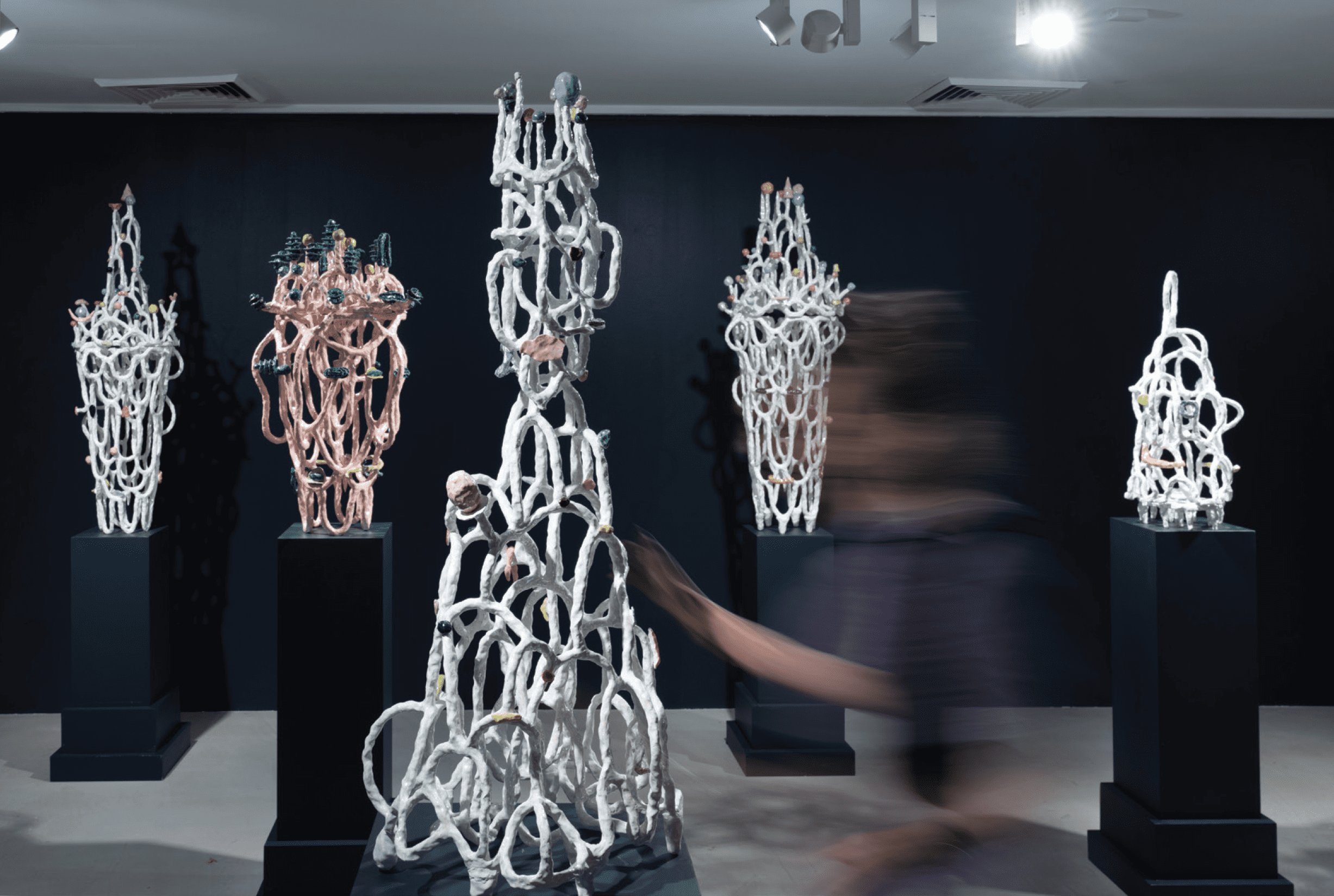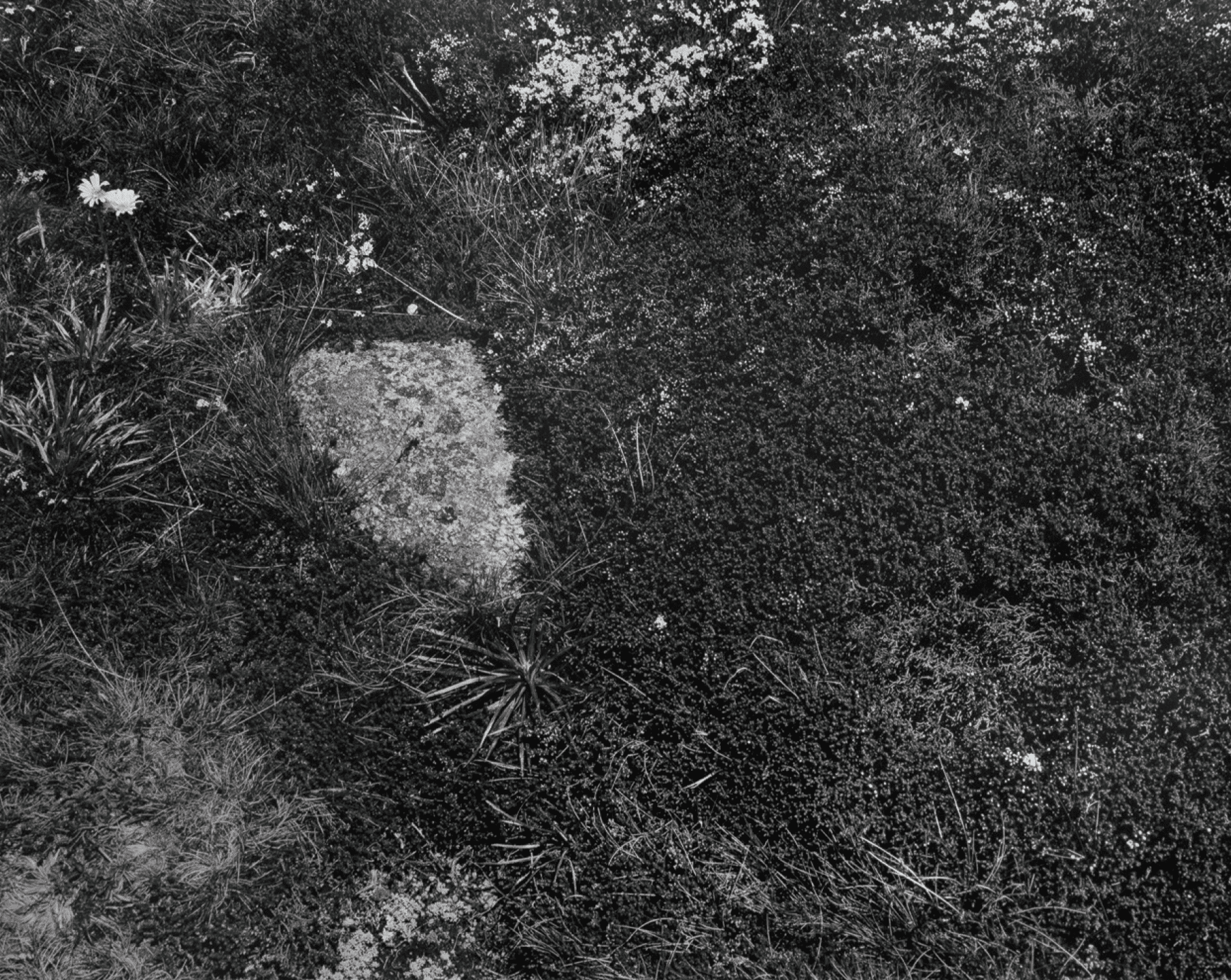
Making Space at the Table
NAP Contemporary’s group show, The Elephant Table, platforms six artists and voices—creating chaos, connection and conversation.
Four Sydney venues are currently exhibiting some of the most poignant, compelling and boundary-pushing works being made in Australia today. The National 4: Australian Art Now is showing at the Art Gallery of New South Wales, Museum of Contemporary Art, Campbelltown Arts Centre and Carriageworks. Featuring scores of works across a multitude of forms, we asked five of the exhibiting artists—Amanda Williams, Diena Georgetti, Elizabeth Day, Heather B. Swann and Lynda Draper— to each tell us about the work they’re showing.

Lynda Draper at Campbelltown Arts Centre
We live in precarious times defined by uncertain ecological, economic, social, and technological change. Throughout history, humankind has utilised material culture to mediate loss and modification in the pursuit of personal and collective certainty.
As an artist who primarily works in the ceramic medium, my practice explores the intersection between dreams and reality, shaped by fragmented images from my surrounding environment, recollected memories, and an interest in material culture. My installation for The National 4: Australian Art Now, titled Talismans for Unsettled Times, is composed of an installation of ceramic works set in a deep blue space redolent of the night sky.
For me, realising these works provided a source of comfort while navigating a time of personal change, often representing a journey within the dualisms of life and death; reality and fantasy; past and present; comfort and pain; self and other. The installation has a resonance of a votive offering—it aims to arouse intrigue, and to invite the imagination and the contemplation of other possible realms.
I’m interested in the relationship between the mind and material world and the related phenomenon of the metaphysical. Creating art is a way of attempting to bridge the gap between these worlds.

Heather B. Swann at Art Gallery of New South Wales
This is a topic I was given. So it’s different. It is certainly in keeping with my conceptual and formal frameworks; for years I have worked to overturn literary and vernacular stories, pop songs, allegories… But Leda and the Swan?
I booked a cheap flight to Athens, 20 days at the Australian Archaeological Institute, 40 bucks a night, days hanging out with the tall, straight, upright girls: the Archaic korai in the National Archaeological Museum.
The archaeologists took me on an excursion to some ruins. We passed an older woman in black standing alone at a bus stop. Saturday mornings might be the loneliest time when you are left on your own. Then a dirty, beaten-up old swan float from a street parade, lying abandoned and forgotten in a field beside the road.
Out of these close encounters, I knew I would represent another aspect of the tale, counter to the sweet narcotic interpretation. A girl is sensual, but this story is not erotic. This is story become myth because it tells us of a power struggle. That’s the point. Things go round, we learn how to live together, generation after generation, the change comes through the retelling.

Diena Georgetti at Museum of Contemporary Art
Community of the People refers to the contributors and artists composed within the paintings. l often import other art to represent my expression, and these six paintings [one included above] include examples of many genders and styles within art and design. There is a kind of evolutionary DNA within the history of art. We can find our ancestors within that, and we can be directed, comforted and challenged by them.
The origins of colour come from the cosmic beginning of time; there was only dark and light, and colour later formed on the planet as material. So, I started with the black and white paintings, as these were the first colours denoted by language. There’s something in the spirituality of colour and the symbolism we attach to it, and how that elevates us; it gives us some understanding apart from the materiality of life.
These paintings primarily use abstract vision, as it is more open to interpretation. However, figuration is included as landscape and portrait, as a widening of content and context. These are more painterly [than previous works]. I haven’t included any hard edges. I’ve also used different tools, not paint brushes, but cardboard, toothbrushes, vegetables to achieve that gesture. I really wanted something more than an articulation of painting; I wanted an impression or illusion. They’re like a backdrop to life; bigger than a person, you almost can’t take them in at once.

Elizabeth Day at Carriageworks
The Flow of Form: There’s a Reason Beyond a Reason. Beyond That There’s a Reason (1797 Parramatta Gaol), Carriageworks, Redfern uses the image of a prison, as an incision or wound on the landscape, to recognise the far-reaching implications of incarceration in Australia’s settlement through to today.
Animating the gallery wall at Carriageworks, the 22-metre-long textile is made from the unravelled tendrils of op shop jumpers and muslin. The life-size replication of the 1797 Parramatta Gaol door traces the ghosts of the past that are still alive in the present, gesturing towards the idea of colonial architecture as a proto-manifestation of the Anthropocene.
Working as a community- and site-based artist, I have presented projects at several historical sites that contain the residue of colonial damage, including at Cumberland Hospital, Westmead for Myco Logic, 2017; and in Longford, Tasmania, working alongside Anna Gibbs, Julie Gough and Noelene Lucas, for Crime Scene, 2019.
Attempting to address this damage, The Flow of Form interfaces with a personal and collective history and the impact of transgenerational trauma. It proposes the joyful possibility of activities of care, ‘unravelling’ this pervasive colonial violence that still pervades culture.

Amanda Williams at Museum of Contemporary Art
My interest in the mountain peaks and high plains of Australia is scientific and symbolic. The landscapes depicted in The National are the adjoining Alpine National Park and Kosciuszko National Park. They are threatened ecological communities protected with the museum-like aura of national park status, registered as ‘endangered’ under law. And yet these landscapes continue to suffer from climate change, postcolonialism, proximity to recreational spaces, and industrial demands. Since 1999, the number of threatened species and ecosystems has grown by over a third. Australia is clearly amid an extinction crisis.
Paradoxically, there are symbolic connections between the conservation movement, the rise of national parks and the history of landscape photography in settler colonies—all a product of the 19th century. How can conservation, recreation and industry demands sit comfortably together? Is it possible to suspend or ‘fix’ a landscape in time, protect it from human and environmental pressure, and, importantly, offer a response that reckons with contested histories and incorporates the views and land management practices of the original landowners?
I use a medium format camera and hand print my photographs in the darkroom. They are big and slow. They take time. The photograph above adds to my ongoing series Alpine Bogs and Associated Fens, 2020-2023. Walking to the summit of Mt Kosciuszko, the view is a portrait of the alpine vegetation that sits atop layers of peat, decayed and compacted moss; an archive—essential to that ecosystem—of all that has passed before.
The National 4: Australian Art Now
(Sydney NSW)
Carriageworks
Until 25 June
Art Gallery of New South Wales
Until 23 July
Museum of Contemporary Art Australia
Until 25 June
Campbelltown Arts Centre
Until 25 June